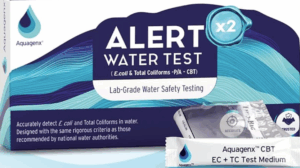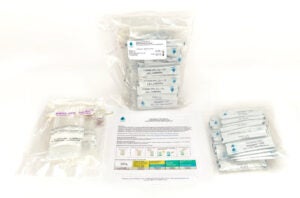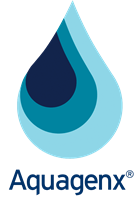Greatest Bacterial Waterborne Risk to Health
There are many different ways humans can become sick. Among them is coming into contact with bacteria (tiny organism with only one cell not visible to the naked eye) and viruses (tiny organism that lives inside a protective shell or envelope not visible to the naked eye). They are on almost everything we touch. We sometimes call bacteria and viruses “germs” for short.
There are trillions of bacteria and viruses in the world. The amazing thing is, most of them are not bad and not all of them make us sick. It is not life threatening to come in contact with most viruses and bacteria. The more we come in contact with “friendly” bacteria and viruses, the more it strengthens and helps our immune system distinguish between “good” and “bad” germs. Without this immune system strengthening we would get sick more frequently.
 Environmental factors also play a role in how we can become sick. Examples of environmental factors that can make us sick are air pollution, allergens, and exposure to toxic (harmful/dangerous/poisonous) substances. Also high up on this list is ingesting contaminated food and water.
Environmental factors also play a role in how we can become sick. Examples of environmental factors that can make us sick are air pollution, allergens, and exposure to toxic (harmful/dangerous/poisonous) substances. Also high up on this list is ingesting contaminated food and water.
Throughout human history, contaminated water has caused millions of deaths around the world. This isn’t just ancient history. Fatalities due to drinking contaminated water still happen today in poor and middle-income countries.
In modern-day USA, people rarely die from drinking contaminated water. However, our fellow citizens still become sick from contaminated drinking water. What is it about water that can cause illness, life threatening infections or even death?
Water can be a carrier of harmful viruses, bacteria and chemicals. This blog post will focus on harmful bacteria in water.
Greatest Bacterial Waterborne Risk to Health
The greatest bacterial waterborne (travels on or by water) risk to human health is fecal matter in drinking and recreational water.
Well water, and tap water, can get contaminated by human and animal poop. The scientific or proper name for poop is feces. E. coli is a bacterium that lives in our intestines, including the large intestine that turns food into feces and waste. Most E. coli bacteria in our intestines is harmless and is even helpful to intestinal health.
How Well Water Becomes Contaminated
However, some strains (type or variety of organism) of E. coli present in feces are pathogenic, meaning they cause illness and disease. How does pathogenic E. coli enter well water? There are many ways:
- Human and animal fecal waste enters surface water (creeks, streams, lakes, ponds, etc.) that seeps into groundwater (water that exists underground) and well water
- Rain washing coliform bacteria or E. coli from soil to groundwater
- Heavy flooding that is contaminated by sewage and fecal waste enters groundwater and wells
- Agricultural practices such as livestock farming and the use of manure-based fertilizers. Livestock waste can contain high levels of bacteria, which can be washed into nearby water sources during rain events or irrigation and flows into groundwater and wells.
- Polluted stormwater runoff enters groundwater and wells
- Sewage and septic system breakdowns and overflows
- Shallow wells and aquifers that are especially vulnerable to bacterial contamination from surface waters
- Poorly constructed, cracked, or unsealed wells
What You Can Do to Ensure Safe Well Water
Does pathogenic E. coli still enter well water in the USA? Yes, it does. What can you do to prevent illness from drinking well water contaminated by fecal matter and harmful E. coli?
- Test your well water specifically for E. coli bacteria at least once a year, and more often if you experience any of the environmental conditions outlined above. Only testing for Coliform bacteria is not sufficient, and we explain why in the difference between coliform and E. coli bacteria.
- Make sure your well is properly sealed, soundly constructed and operating properly
Key Terms
Bacteria – tiny organism with only one cell not visible to the naked eye
Virus – tiny organism that lives inside a protective shell or envelope not visible to the naked eye
Strain (of bacteria) – type or variety of bacterial organisms
Waterborne – travels on or by water
Toxic – harmful, dangerous, poisonous
Pathogenic – causes disease(s)
Surface Water – water that collects on the surface of the ground (lake, river, ocean, creek, pond, etc.)
Groundwater – water that exists underground
Feces – solid or semi-solid waste discharged from the body, commonly called poop or stool
Aquagenx Well Water Test Kits
Buy on Amazon & Walmart
Buy kits that contain 2, 5, or 10 tests

Buy In Bulk from Aquagenx
Buy kits that contain 25, 50 or 100 tests

